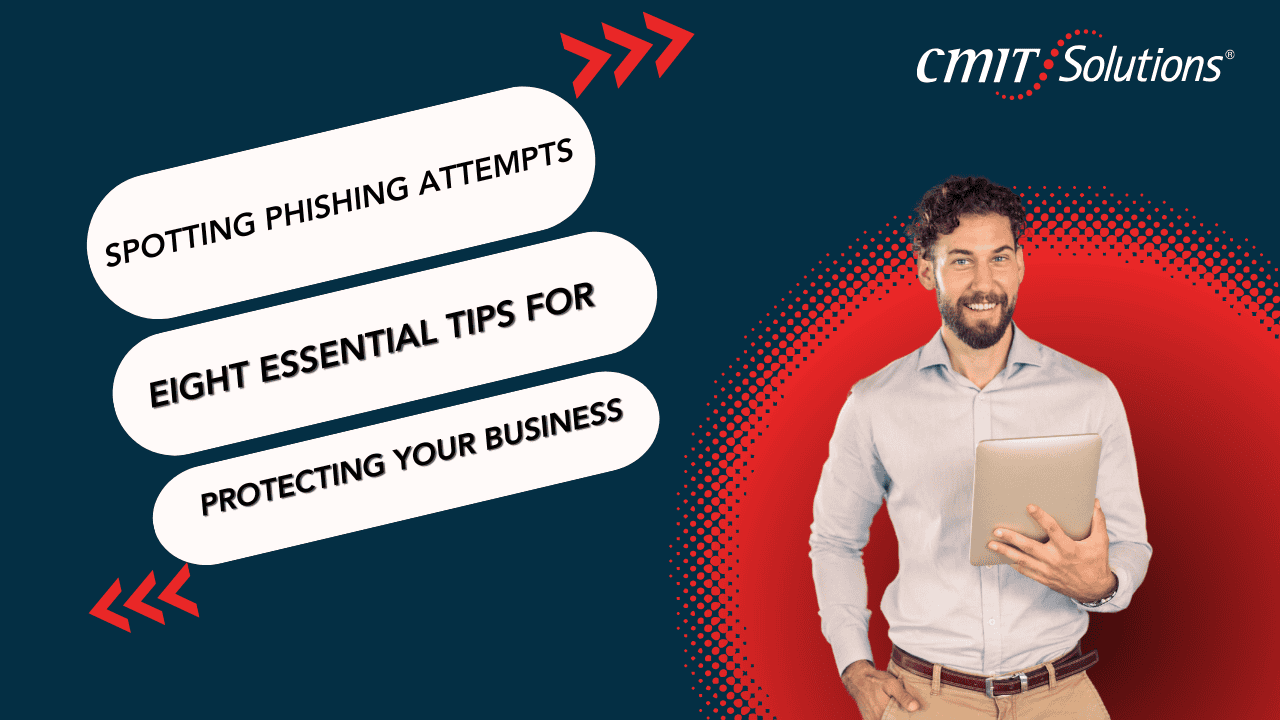Phishing attacks are a persistent and growing threat, exploiting businesses of all sizes with sophisticated techniques designed to steal sensitive information. These deceptive strategies often come in the form of fraudulent emails, messages, or websites masquerading as legitimate entities. For businesses, falling victim to phishing can result in significant data breaches, financial loss, and reputational harm.
Understanding the nature of phishing, its warning signs, and the steps you can take to safeguard your organization is critical. This guide explores these aspects in detail, offering actionable advice for businesses looking to strengthen their defenses.
The Basics of Phishing: What Every Business Should Know
Phishing typically involves fraudulent communications designed to appear legitimate, luring recipients into revealing sensitive data such as login credentials, credit card numbers, or personal identification details. These attacks are often delivered via email but can also occur through text messages or phone calls.
Modern phishing campaigns have grown increasingly sophisticated, leveraging personalization and urgency to deceive recipients. For example, an email may claim to be from a trusted colleague or partner, urging immediate action to resolve an urgent issue.
For businesses, understanding phishing tactics is the first step in mitigating their risks. Many companies are turning to managed IT services to develop proactive strategies against such threats.
Spotting Common Phishing Indicators
While phishing emails vary in complexity, they often share several key characteristics that make them identifiable:
- Suspicious Email Domains: Always verify the sender’s email address. Subtle misspellings, such as “@paypal-secure.com” instead of “@paypal.com,” are a common tactic.
- Generic Greetings: Phishing emails often use impersonal salutations like “Dear Customer” instead of addressing you by name.
- Unexpected Attachments or Links: Be cautious of emails that urge you to click on links or download files, especially if they claim to be urgent.
- Poor Grammar and Spelling: Legitimate companies typically proofread their communications, so emails riddled with errors are a red flag.
- Urgent or Threatening Language: Phishing emails often create a false sense of urgency, pressuring recipients to act immediately.
Organizations must train employees to recognize these warning signs and report suspicious communications. Learn more about cybersecurity best practices to safeguard your operations.
The Risks of Phishing Attacks
Phishing is not just a minor inconvenience; its consequences can be catastrophic for businesses. These risks include:
- Financial Loss: Direct theft of funds or the cost of recovering compromised accounts can be significant.
- Data Breaches: Stolen credentials can provide access to sensitive corporate or customer data.
- Reputational Damage: Clients and stakeholders may lose trust in a business that fails to protect its information.
- Legal and Regulatory Penalties: Non-compliance with data protection laws can result in hefty fines.
Building a robust defense strategy is essential. Explore how data backup and disaster recovery solutions can provide a safety net for your business.
Strengthening Your Defenses: Proactive Measures
Employee Training
The human element is often the weakest link in cybersecurity. Regular training sessions can empower employees to identify and respond appropriately to phishing attempts. Simulated phishing exercises can also help assess and improve your team’s readiness.
Email Security Solutions
Implementing tools like Secure Email Gateways (SEGs) can filter out phishing emails before they reach employees.
Multi-Factor Authentication (MFA)
Even if credentials are compromised, MFA provides an additional layer of security by requiring verification through a second device or method.
Data Encryption
Encrypting sensitive data ensures that even if it is intercepted, it remains unreadable to unauthorized users.
Ransomware Mitigation
Phishing attacks often serve as a gateway for ransomware. Learn about protecting your business against ransomware to minimize these risks.
The Role of Managed IT Services in Phishing Prevention
Managed IT services play a pivotal role in combating phishing by providing businesses with expert guidance and advanced tools to detect and respond to threats.
- Continuous Monitoring: IT providers monitor networks 24/7 for signs of phishing and other cyber threats.
- Incident Response: In the event of a successful phishing attempt, managed IT services can quickly identify the breach and mitigate its impact.
- Strategic Planning: From setting up firewalls to conducting regular vulnerability assessments, managed IT services ensure that businesses stay one step ahead of cybercriminals.
Find out more about the role of IT managed services in boosting efficiency and security.
Phishing and the Shift to Remote Work
The rise of remote work has increased the potential for phishing attacks as employees access sensitive systems from outside the office. This shift necessitates enhanced security measures, including:
- VPN Usage: Secure remote connections ensure that data remains protected from interception.
- Secure Collaboration Tools: Platforms like Microsoft Teams and Slack should be configured to minimize vulnerabilities.
- Remote Training: Educate employees on how to recognize phishing attempts when working outside the traditional office environment.
Learn how embracing remote collaboration tools can improve productivity while maintaining security.
Addressing the Challenges of Phishing in Healthcare
Healthcare organizations are prime targets for phishing attacks due to the sensitive nature of patient data. A single breach can result in compliance violations, reputational damage, and compromised patient trust.
To combat these challenges, healthcare providers must implement specialized cybersecurity measures tailored to their industry. Discover the benefits of managed IT services for healthcare providers to protect your practice.
Why Phishing Prevention is a Continuous Effort
Phishing attacks evolve rapidly, making it crucial for businesses to stay ahead of the curve. This requires ongoing investments in technology, training, and partnerships with IT experts.
Whether you’re a small startup or an established enterprise, safeguarding your business from phishing is a non-negotiable aspect of modern cybersecurity.
By combining awareness, proactive measures, and expert guidance, your business can reduce its vulnerability and ensure long-term security. For comprehensive solutions, explore how CMIT Boston, Newton, and Waltham can support your cybersecurity needs.
Conclusion
Phishing attacks are among the most significant cybersecurity threats facing businesses today. However, with the right strategies in place, these risks can be mitigated effectively. Regular training, advanced email security tools, and robust IT partnerships are all critical components of a successful defense strategy.
CMIT Boston, Newton, and Waltham specialize in helping businesses develop comprehensive cybersecurity frameworks tailored to their unique needs. By partnering with us, you can ensure your organization is well-equipped to tackle phishing and other cyber threats head-on.
For more insights and solutions, visit our blog on managed IT services for business growth to learn how proactive IT support can make all the difference.






